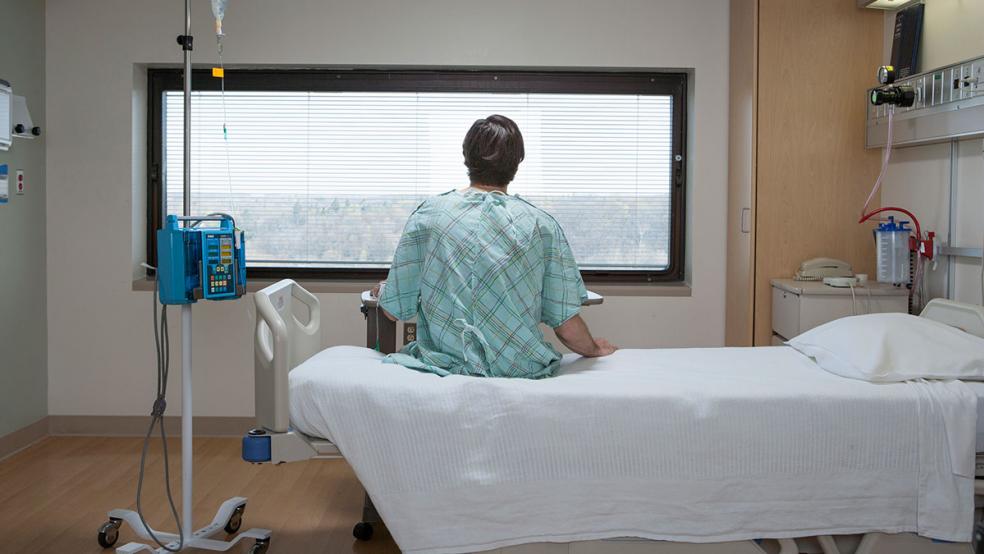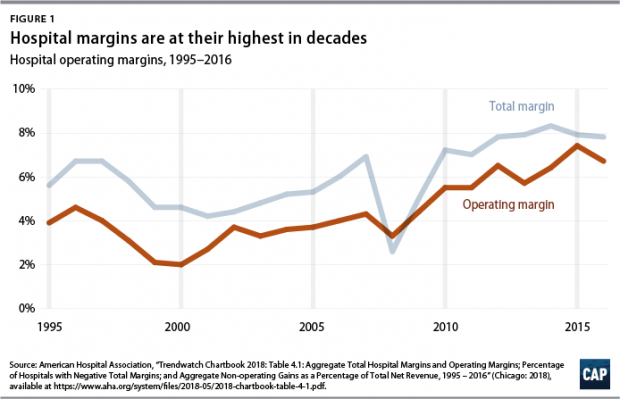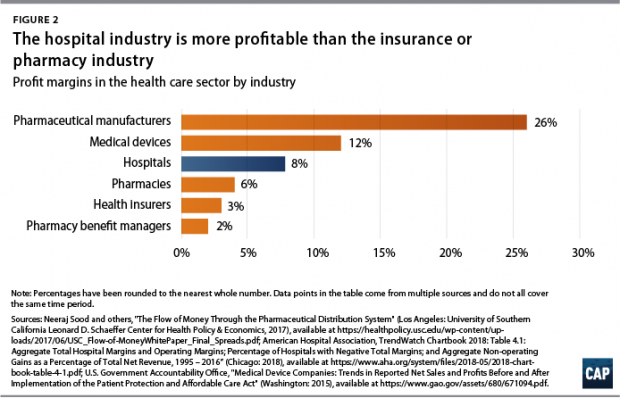Hospital-based care is the largest component of U.S. health-care costs, accounting for about a third of total spending, or a projected $1.3 trillion in 2019. That makes hospitals a key target for cost-cutting. “Taming the overall growth of health care costs requires action to lower the prices Americans pay for hospital care,” a new report from the Center for American Progress (CAP), a left-leaning think tank, says.
The CAP report examines hospital profitability. Here are some key stats:
• Hospital profitability is at its highest rate in decades, with total margin across the industry at 7.8% as of 2016. CAP also analyzed data on more than 3,000 acute care hospitals, including for-profit, nonprofit and public institutions. It found that total profit margin for that group was 7%, with some wide variation across ownership type and individual hospitals. For-profit hospitals had an average total margin of 11%, while total margins were lower at nonprofit hospitals (7%) and public hospitals (5%). But more than one-quarter of hospitals lost money in in 2016, including 40% of public hospitals.
• Hospital margins are higher than those in some other parts of the health care sector, though they remain well below margins for drug companies.
• Total profits among the hospitals in CAP’s analysis was $63.6 billion in 2016 — a figure that “suggests that stronger rate regulation could save Americans tens of billions of dollars on hospital expenditures, even if rates were tailored to keep afloat loss-making hospitals that are crucial to patient access,” CAP health economist Emily Gee writes.
• Hospital payment rates across all payers, including Medicare, Medicaid and private insurance, are about 34% higher than what Medicare pays. Commercial insurers are estimated to pay about double what Medicare does for hospital care, the report says. The hospital industry says that Medicare payments don’t cover the full cost of delivering patient care — only reimbursing 87 cents on the dollar in 2017 — and that hospitals would be financially insolvent if they were only paid Medicare rates.
For more details, and to see Gee’s recommendations to rein in the price of hospital care, read the full report.







